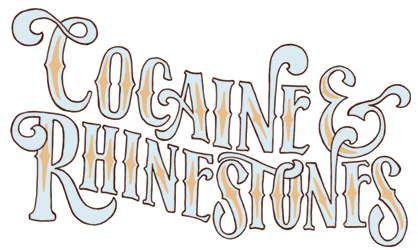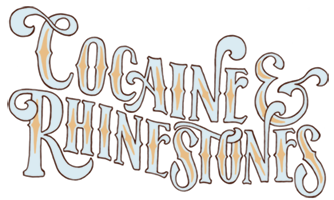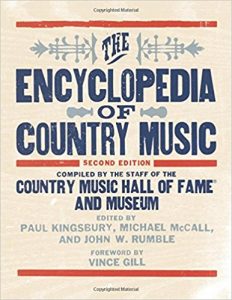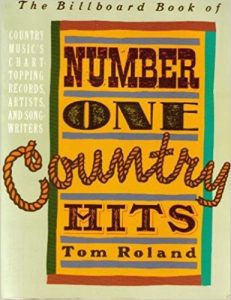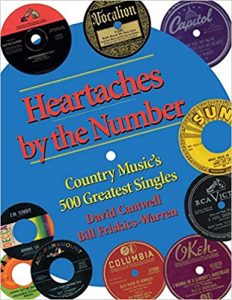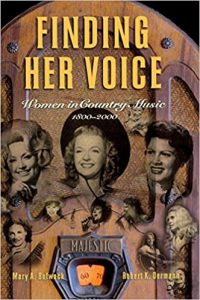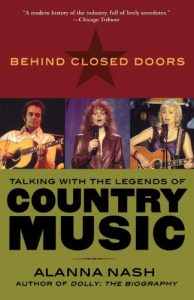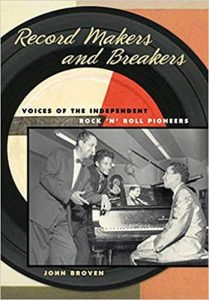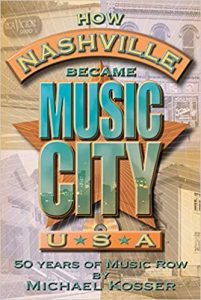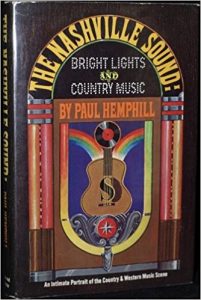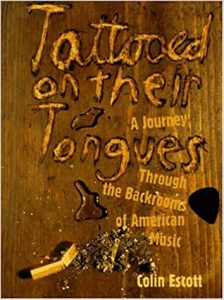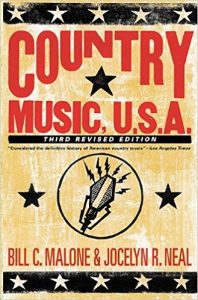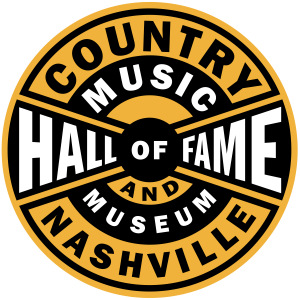Every episode of the Cocaine & Rhinestones podcast has its own companion blog post with sources cited and all the extra goodies you come to this website to find. This is a page for books that were either used as sources or contain a generally accepted overview of the country music topics in nearly every single episode. They are gathered here in order to not have to discuss the same 20 books or so over and over in every Liner Notes. (For the same reason, there is also a separate Season 2 Library page.)
Please note my recommendation of these books as sources is not a wholesale endorsement that every word in every book is true, as no source is infallible. What these books are, however, is the best collection of information we have on the subject of country music. These books stay in their own section on my shelves so that I always know where they are. Anyone looking to start their own country music library should start with whichever they find most intriguing. Several are intended as reference books, i.e. not the type of thing most people would want to sit down and read from beginning to end, however the Internet has brought such books to life in an entirely new way, offering the ability to sit down at a computer and listen to every song mentioned on the pages.
[If you’d like to help me expand my library, feel free to purchase a book from this Amazon wishlist I’ve stocked with items I know I’ll need for the podcast at some point in the future. Select “add to cart” for whatever you’d like to send in, simply check out as you normally would and Amazon will get it to me. Don’t worry about buying something I already have. When an item is purchased, Amazon automatically removes it from the list.]
I have the First and Second Editions of The Encyclopedia of Country Music. If you must choose, go with the most recent one. It’s much bigger, so you get more entries. I’m really glad I have both editions, though. Entries have been “cleaned up” in the newer one with potentially disparaging insinuations removed. (If you’ve got access to both editions, check out the changes made to the entry for The Judds, as an example of what I mean.) The caustic tone of some First Edition entries obviously adds nothing for scholarly purposes but, when you’re making a podcast about the different “vibes” of different eras, that stuff is valuable.
It’s close to once a day that I reach for this book hoping to find some background on a #1 country single that hit before the year 1968, which is, sadly, the year this volume begins. As it stands, having a book like this for the story of every country chart-topper from the years 1968 to 1991 has been a huge helping hand. Entries alternate between information on the writer of a hit, performer of a hit or the specific event that inspired the hit.
Alright, first thing, ignore the book’s subtitle and forget any “I have nothing better to do than argue about lists of songs” impulses which may be lurking in the back corners of your mind. This book plus headphones plus an Internet connection is the quickest crash course on the genre a person could give themselves before a hot date with someone they know loves country music. For those who do want to nitpick and argue, David Cantwell and Bill Friskics-Warren leave plenty of openings. Their intention was clearly not to gather “country music’s 500 greatest singles” but to collect such a number of songs which would illustrate the genre’s sonic evolution, diverse source material and wide-reaching influence. And they do this from an informed perspective which assumes a somewhat informed reader, one who’s probably heard (for example) Roy Acuff’s “Night Train to Memphis” and may be more interested in hearing the story of Bobby Hebb’s record on that song.
Segregation is a powerful form of self-fulfilling prophecy. Turns out, when an entire gender is subject to a different set of rules for a couple hundred years of an artistic form, that is reflected in the history that gets written (or, more to the point, doesn’t get written) about said form. As the unwritten events fade further into the past, it only becomes more difficult to tell the stories of women who were not among the few to achieve success against the odds. So Mary A. Bufwack and Robert K. Oermann did a very important thing when they compiled this document. It is roughly 50% the size of the Encyclopedia of Country Music above but that’s not “evidence” women were given a fair shake all along; it’s because this book takes the space to offer a more narrative approach toward its subjects rather than the brief summaries found in the encyclopedia.
I don’t know anything about Alanna Nash except that she’s clearly obsessed with Elvis Presley, having written approximately 900 books about him, and that she may have the greatest talent I’ve ever come across for interviewing country artists. If there’s a rogue thought rattling around in the mind of her interview subject, begging not to be spoken aloud, Alanna will somehow find it and extricate it. Behind Closed Doors is over 500 pages long and if you aren’t interested in at least ten of the twenty-seven interviews then you do not like country music. And that’s okay. Stick around, though. I’ll get you.
If you like reading interviews with country artists, there’s a fair chance you’d be equally interested in the minds of people who make it their job to put words in those artists’ mouths. The sixteen writers Philip Self interviews in this book run the gamut from stone-cold professional workhorse to conspiracy theorist spirit channeler. From wisdom on the craft to profound origin stories of creators and their works, this one’s got it all, folks.
As with the books focused on artists and songwriters above, this is a look at the creative process of country music written by Michael Jarrett from the perspective of producers in the genre. This is what happens to songs in the studio and how they get turned into the records we love. But this book tells bigger stories than that because, for much of the genre’s history, much of a producer’s job was done outside the studio, finding and nurturing talented singers and writers. This is as entertaining a read as any other book on this page.
And then there’s the industry side of the record industry. This book’s title says it’s about rock ‘n’ roll, not country, but it’s also a book about early independent record labels and there were never more than a few indie labels dedicated entirely to country music who were successful enough to make it into the pages of history. For the same reasons sonic lines between honky tonk country and first-wave rock were indistinct in the beginning, much of the history of indie labels in the early rock era is applicable to country music and it’s often the case those labels released country music as well. Those interested in the “hustler” characters of the business would do well to start here.
This one draws from all perspectives in the immediately preceding books (artists, producers, songwriters, musicians, label executives, etc.) to tell the story promised by the title. The interesting thing about Michael Kosser’s subtitle, whether it was intentional or not, is the Music Row we think of when we use that term really did only exist for about 50 years. It’s still home to many publishing companies and other music business entities but the major label studio system documented here exists only as a shadow of its former self, lending Kosser’s book the vibe of taking a look back on relatively recent history. This is as near as we’ll ever get to contemporary-yet-comprehensive account of what Music Row was and how it came to be.
I wish Paul Hemphill was still alive because he could write his ass off but also because his book, The Nashville Sound, was a major influence on my decision to make a podcast about country music. See, I can not comprehend how anyone enjoyed this book before the Internet existed. This is as musical a book as has ever been written. Any page you flip to without at least one direct reference to a song title or performer’s entire career, as if you’re just as familiar with these things as Paul, that page is the exception. And I’d imagine that was a pretty frustrating experience for everyone who wasn’t familiar with these things and had no easy way to become so. It’s as if Paul thought he was writing a book that 50 years later would be able to be enhanced with the soundtrack he built alongside this narrative… The format jumps back and forth between editorial commentary on the history/then-current state of the genre and “man on the street” interactions between Paul and the various fans/industry insiders he speaks with while researching the book. I don’t believe it’s possible to walk into a flea market in the middle 75% of this nation without seeing a copy of this. Buy it. Clear your schedule. Keep a YouTube-accessible device within reach and go deep into the world of country music.
Colin Escott is probably my favorite author on the topic of country music. I recommend all of his books (as well as the Dim Lights, Thick Smoke and Hillbilly Music series of CDs w/ booklets for Bear Family) but this is the book most focused on an overview of country music. The word “backrooms” in the title is indicative of a perspective running through a lot of Colin’s work, how often less famous and under-recognized artists and other figures are the greatest innovators, responsible for many of the biggest changes in forms which then filter out to mainstream audiences in more commercial versions of the source material.
Alright, yes, this sensationalist book title is definitely a reference to Kenneth Anger’s Hollywood Babylon but the actual contents are not nearly as exploitative or egregious as that. Probably operating from the certainty they’d be sued for printing unfounded rumors or gossip, everything here seems to be based on the best sources Randall Riese had available at the time. While some of that information is always susceptible to being corrected or updated by someone like me who later comes for the same subject with more and better sources, this book largely does a pretty great job of covering scandalous or controversial events in the history of the genre. And I say this as someone whose baby pictures are printed inside.
One of the most exhaustive histories (and the first scholarly document) of the genre ever written, Bill Malone’s book, though still readable, can feel like a bit of a chore. If you need to know every little thing about what Bill believes is worth knowing, Country Music USA may be the book for you but, speaking now as a high school dropout, reading this thing is like what I imagine it would be to go to college to learn instead of to party. Save this one until you’re in danger of making yourself look like an idiot by pretending to be some sort of definitive voice on country music or something. Or until you need to own a book you can use as a weapon. (It’s huge.)
I have no idea what happened to the AMG website but, in the early ’00s, it was the greatest thing on the Internet for music fans. One could (and did) easily lose years of their life following rabbit holes to learn about genres, sub-genres, who influenced and was influenced, changes in styles according to times and places, etc. This book is sort-of a combination of the Encyclopedia of Country Music and Heartaches by the Number, which each entry’s brief career summary accompanied by recommended listening selections.
After Season 1 came out, I was invited to use the Country Music Hall of Fame and Museum’s archives for research. This is not a resource I knew existed and I was blown away by how much information is in there and only in there. Honestly, I had never even gone inside the building before because I just assumed it was a tourist trap. I was wrong. The museum is amazing. Their exhibits are always extremely well-informed. A lot of the people who work there wrote some of the books I use as sources on this show. If you’re ever in Nashville, I encourage you to make a trip to the museum. If you’re a writer or a researcher working in or around country music, it is necessary that you use these archives.
